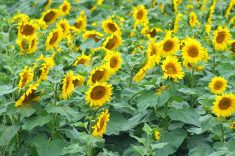Continued snow and below normal temperatures have kept most small grain seeding across the U.S. Northern Plains at a standstill.
Al Dutcher, Nebraska state climatologist, said that even if temperatures return to normal, this April will be among the top-10 coldest. If temperatures remain below normal, April will rank in the top-five coldest on record. “The difference from normal is even greater as you move further north,” Dutcher said.
Last week temperatures across Minnesota and North Dakota were 5 to 7 C below normal, with parts of central North Dakota exceeding 10 C below normal.
Read Also

USDA sees tighter U.S. corn stocks, soybeans and wheat unchanged
The USDA is forecasting tighter U.S. corn ending stocks for 2025/26 due to increased exports. The supply/demand balance sheets for soybeans and wheat were unchanged.
“Until the snowpack melts, weather conditions will remain below normal. Once that occurs, excess moisture may be a greater problem. It takes much higher daytime temperatures and thermal energy to warm cold wet soils compared to drier soil,” Dutcher said.
The U.S. Department of Agriculture’s (USDA) National Agriculture Statistics Service (NASS) reported Monday that for the week ending Apr. 21 there was no increase in planted area for wheat or durum in the key Northern Plains states of Minnesota, Montana, North Dakota and South Dakota. There was some isolated seeding of oats and barley in Montana and none in the other states.
Seeding progress for spring wheat and durum ranges from zero to six per cent planted across the four states. Normally 15 to 40 per cent of the crop should be sown by this date.
The situation is slightly better for barley. Twenty-four per cent of the crop is sown in Montana, although nothing is yet seeded in North Dakota or Minnesota.
Compared to the individual states, national seeding progress for spring wheat and barley crops is not as bleak. Seven per cent of the spring wheat crop is sown, 17 percentage points below the five-year average. Twenty-three per cent of barley has been sown, only one percentage point below the five-year average.
National progress better
Seeding efforts in Washington and Idaho remain above normal, boosting the average national progress.
The difference from normal is most extreme in Minnesota and North Dakota. North Dakota is consistently the largest producer of spring wheat, durum and canola in the U.S. It is also one of the top producers of oats and barley. In that state, snow cover was on average six inches deep and there were next to no days suitable for fieldwork over the previous week.
Late seeding tends to lead to lower yields and increases the risk of quality problems. Joel Ransom, small grains and corn extension agronomist with North Dakota State University, said “Small grains tend to develop best at temperatures below 21 C. Tillering is better, grain fill is improved and spikes are longer.”
While weather later in the summer can be equally or more important in determining final yield and quality, “The later we get the likelihood of bumper yields decreases,” Ransom said. At the moment it is not too late, but we are undoubtedly going to have a late seeding year.”
Similar lack of seeding progress occurred in North Dakota in 2011, 2009 and 2001. Yield was below trend in 2011, above in 2009 and near to trend in 2001. Ransom said “Lots of things can happen between seeding and harvest. We might see some people thinking about making the switch from corn to small grains.”
Crop insurance deadlines are generally May 15 for small grains in South Dakota and May 31 for North Dakota and Minnesota, so there is still ample time for crops to be sown.
“If this was 1990 then there would be concern with the current weather,” Dutcher said. “With the considerable improvements in seeding capacity, once we get better conditions, farmers will be able to make very rapid seeding progress.”
— Stuart McMillan writes from Winnipeg on weather and agronomic issues affecting Prairie farmers.














